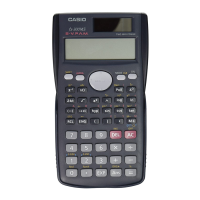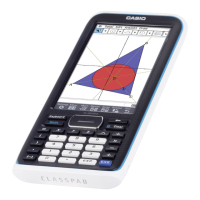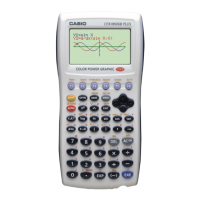20021201
2-7-25
Using the Action Menu
uu
uu
u percent
Function: Returns the percentage of each element in a list, the sum of which is assumed
to be 100.
Syntax: percent (List [
)
]
Example: To determine the percentage of each element in the list {1, 2, 3}
Menu Item: [Action][List-Calculation][percent]
uu
uu
u polyEval
Function: Returns a polynomial arranged in the descending order of powers, so
coefficients correspond sequentially to each element in the input list.
Syntax: polyEval (List [,Exp/List] [
) ]
Example: To create a second degree polynomial with the coefficients {1, 2, 3}
Menu Item: [Action][List-Calculation][polyEval]
•“x” is the default when you omit “[,Exp/List]”.
uu
uu
u sequence
Function: Returns the lowest-degree polynomial that represents the sequence expressed
by the input list. When there are two lists, this command returns a polynomial
that maps each element in the first list to its corresponding element in the
second list.
Syntax: sequence (List-1[, List-2] [,variable] [
)
]
•“x” is the default when you omit “[, variable]”.
Example: To determine a polynomial for a sequence expressed by the list {3, 5, 7, 9}
Menu Item: [Action][List-Calculation][sequence]
Example: To determine a polynomial that maps each element in the list {1, 3, 5, 7} to its
corresponding element in the list {0, –1, 2, –3}.
Menu Item: [Action][List-Calculation][sequence]

